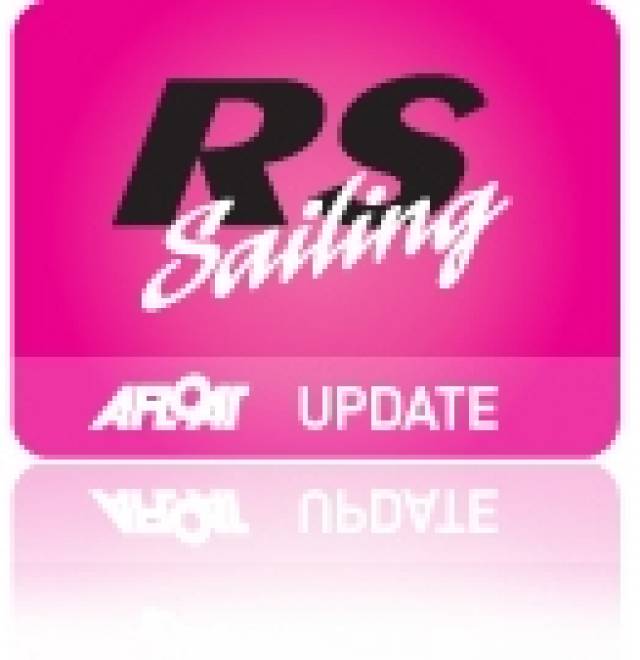#SKIFF – Testing of the production specification RS900, RS Sailing's contender for selection as the new women's Olympic skiff, is underway. It's a sleek looking affair as you might expect that will take women's sailing into a whole new area because it has been designed especially for lighter crew weights.
"We believe that a new generation of elite skiff sailors deserve a purpose designed boat that will excel in the role and stand the test of time" says RS managing director, Martin Wadhams. "After several changes to the women's classes over recent Olympic cycles, the last thing anyone wants is another short term measure. We began the process several years ago believing that the RS800 could be modified to become the women's skiff, but quickly realised that although it was arguably the most suited of the then current bunch, it would never be perfect for Olympic women. So our own RS team of Alex Southon and Nick Peters has worked with Phil Morrison to start from scratch and design the RS900 without compromise."

The RS900 hull is shorter, narrower and has lower freeboard – smaller all round to suit light female teams. The reduced surface area allows a corresponding weight reduction whilst using a similar long lasting, epoxy foam sandwich construction system to the 800.
Fully integrated wide, solid wings and a smooth run-through deck on the RS900 facilitate athletic sailing. RS900 sailors will use techniques matched to those of the 49er men, allowing shared training in many regions, especially helpful for smaller sailing nations. As you can see from the photos, the wings fit smoothly into the hull providing arguably the most flowing platform of any skiff, plus structural integrity and seriously good looks.
Structural engineering has played a major part in the design development of the RS900. RS technical director Alex Southon has significant, hard-won, volume production experience and he has enlisted input from world class composite engineering experts in the USA on this project to help him create a boat that is not only strong and long lasting, but also efficient to build. This will keep costs low for a skiff of this type and the RS900's price will in line with a competitive 470 rather than the similarly high performance 49er!
The rig is matched to wide leverage to produce spectacular performance whilst suiting the110 -130kg crew weight range specified by ISAF. The jib is tacked onto the bow, with the forestay attachment point pushed as far forward of the forefoot as possible to give maximum low-down jib area, without excessive hull length and correspondingly reduced responsiveness. The relatively straight mast and square head mainsail follow the latest skiff design trends and, of course, a masthead spinnaker maximises downwind performance.
RS Sailing has the proven ability to produce a large number of epoxy racing dinghies quickly - last year around two hundred RS100s were built and delivered to destinations across the globe within 12 months of launch. Their international dealer network provides back-up support with parts and sails.
Final testing of RS900 will continue over the coming months in the run up to ISAF's evaluation trials which are expected to be held in March 2012, although as Alex Southon says "We're talking about details now from a development perspective. The 900 works and all the sailors who've been in it so far are really excited – so we'll just keep tweaking the rig and getting miles under the hull until we have to stop!"































































